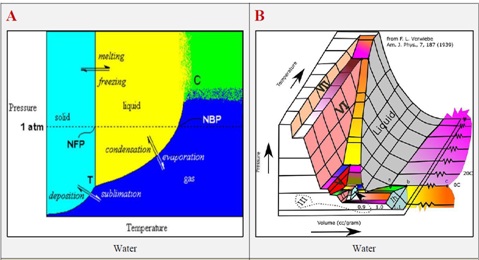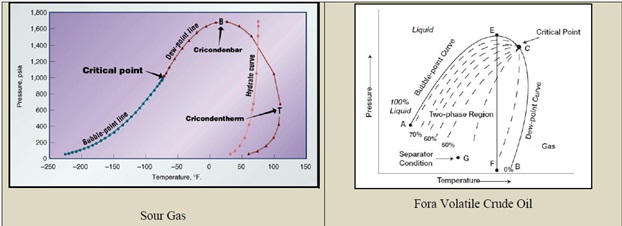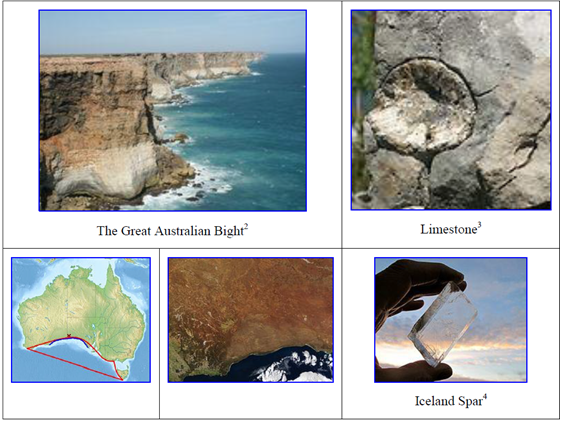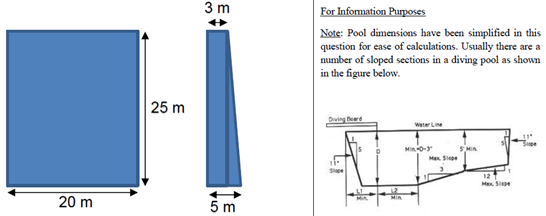Question 1:
Rob was supposed to spend his two-week school work experience at his local auto-repair shop. Unfortunately, his time on the job only lasted two days.
On day two, Rob was asked to get the 1-liter air tool oil which was sitting on the work bench, however, as his hands were full of grease, instead of wiping them on a nearby rag, Rob decided to elbow the ¾-full can of oil across the work bench. This was a very bad idea because he pushed the oil can with such force that it slid 473 mm across the bench before tipping over and beginning to spill its contents.
Rob rushed to pick up the can, but in his haste, he tripped over the newspapers which had been placed under the two left legs of the work bench - the newspapers were there to soak up the motor oil which Rob had spilled the previous day - and fell flat on the floor bumping the legs of the work bench causing it to tip over and fall on top of the mechanic on the other side.
Taking the density of the air tool oil to be 865 kg/m^3 and the mass of the empty can to be 0.726 kg, what was the total weight of the can before the spill?
If the newspapers under the left legs of the work bench propped up the work bench to a slope of 9.4-degrees with the flat ground, what was the applied force on the can of air tool oil as it was moving across the bench prior to it stopping and tipping over? Take the coefficient of kinetic friction for steel on steel to be μk = 0.60.
Neglecting the energy required to tip over the can of air tool oil and assuming no energy losses in the form of heat, how much work did Rob perform in moving the can of air tool oil?
Is this work path-dependent?
If the heat generated by moving the can of air tool oil across the work bench had not been negligible in this case, it may have contributed to a safety hazard. Discuss the differences between heat and work in terms of molecular motion and internal energy.
The air tool oil is chemically identified as: petroleum distillates, hydrotreated heavy naphthenic. Discuss this product in detail. Focus your discussion on the type of elements and compounds in this product, the predominant type of chemical bonds, and other relevant chemical information. Include chemical formulae, sketches, and/or other relevant information pertaining to the main constituents of this product to support your answer.
Question 2:
(a) Explain the most significant features on each of the diagrams1 below. You may discuss diagrams A and B together, and C and D together. Ensure that your discussion includes a brief description of the substance(s) as well as referring to the locations of the key features on the diagrams.


(b) Complete the following table.
(c) Provide the General Phase Rule Formula which may be used for determining the degrees of freedom for the Triple Point.
(d) Utilizing the appropriate Phase Rule Formula, determine how many degrees of freedom the Triple Point of water has.
Question 3:

Jack's family drove across the Nullarbor Plain in South Australia. At a section of the Eyre Highway near the town of Eucla, his dad stopped the car as this location provided easy access to the Great Australian Bight, which has the longest line of sea cliffs in the world, and is one of the best sites in the world to spot Southern Right Whales.
Whilst his parents were occupied looking through their binoculars, Jack stealthily nudged a nearby white-coloured rock with his shoe causing it to drop over the edge.
Assume the rock which Jack nudged dropped from a rest position and fell a distance, y, in a given time, t. If the distance during which the rock fell is halved, the time it fell would be?
Hint: Find t in terms of y; designate t1 for distance y, and t2 for distance ½y. Then determine the ratio t1: t2.
The distance, y, which the rock fell corresponded to the height of the sea cliff at that section. If this distance was 60 m, determine the velocity - in km/h - of the rock when it hit the water's surface.
How long did it take for the rock to fall into the water?
The white-coloured rock which Jack pushed over the cliff is known as Wilson Bluff Limestone. The Great Australian Bight is primarily composed of this rock and it is believed to have been formed on the seabed between 38 and 42 million years ago.
Limestone is a sedimentary rock, composed mainly of skeletal fragments of marine organisms such as coral, forams and molluscs. Its major materials are the minerals calcite and aragonite, which are different crystal forms of calcium carbonate (CaCO3).
Provide a neat sketch showing a calcium atom becoming a calcium ion. Ensure that your sketch clearly identifies the various parts of the calcium atom and ion.
Provide a neat sketch showing the Lewis Diagram of the carbonate ion. Ensure that you clearly display all the components of this compound.
Is the carbonate ion symmetrical? If so, can the symmetry be achieved by a resonance between various structures? If not, what structure does the compound have? Provide a sketch(es) of the available structure(s).
Provide a sketch(es) showing the resonance of the carbonate ion, clearly identifying the fractional bonds and delocalised charges.
Explain in detail the type of bond which is developed between the calcium and carbonate ions and explain the significance of these types of bonds. Include a sketch(es) to support your answer.
Does calcium carbonate have a high solubility in water? Discuss in detail the solubility of the types of bonds which are formed by compounds such as calcium carbonate. Ensure that your answer includes a discussion of dissociation, electrostatic attraction, and ion-dipole attractive forces. Provide appropriate chemical equations to support your answer.
Write a chemical equation for the reaction of calcium carbonate with an acid, such as hydrochloric acid.
When calcium carbonate is heated to temperatures above 840°C it decomposes to form quicklime as one of the products. Show the chemical equation for this reaction.
Calcium carbonate will react with water that is saturated with carbon dioxide to form the soluble calcium bicarbonate. This reaction is important in the erosion of carbonate rock, forming caverns, and leads to hard water in many regions. This reaction is occurring in areas of the Great Australian Bight. Write the chemical equation for this reaction.
Iceland Spar is a transparent variety of calcite, a crystallized form of calcium carbonate. Transparent calcite is renowned for its ability to cause double refraction and this material has been extensively studied by such pioneers as Christiaan Huygens, Isaac Newton, Sir George Stokes and Augustin-Jean Fresnel. Furthermore, it has been speculated that Vikings used calcite crystals for navigational purposes as the crystals allowed them to determine the direction of the sun on cloudy days.
Discuss the structure and polarising nature of transparent calcite crystals. Include a sketch(es) to support your explanation.
A calcite crystal is used to make two polarising filters. Unpolarised light with an intensity of I_0 passes through the first polarising filter and then the second polarising filter. The second filter is oriented at an angle of 60 degrees relative to the first filter. What is the intensity of the light, in terms of I_0, after it passes through each filter?
Question 4:
Miriam and her identical twin sister Sarah are professional divers who compete in the women's 10 m synchronised diving. They both spend up to six hours a day practicing in the water. Some days they try new moves, other days they spend on perfecting their routines.
The 5337D dive - a reverse one and a half somersaults with three and a half twists, in the free position - is one of the twins' highest scoring dives. Considering that Miriam weighs 48.5 kg and Sarah weighs 48.1 kg, and assuming only vertical motion, what is the combined kinetic energy of the girls when they both enter the water at the climax of this dive?
Olympic-grade diving pools are designed and operated according to strict guidelines5. For instance, the water temperature must be a minimum of 26°C.
On a winter's morning, after removing the pool covers, the temperature of the water in the diving pool is found to be 8°C. What quantity of heat is required to raise the temperature of the diving pool water to the mandatory minimum temperature?
The pool dimensions are as shown in the figures below. Take the specific heat capacity of water to be 4.18 J/g°C and the density to be 1000 kg/m3.

Department of Local Government, Sport and Cultural Industries:
It is a balmy 18°C spring morning and Miriam and Sarah are preparing to head out to training. Unbeknownst to them, Alfred, the diving pool manager, missed his alarm and slept in this morning. Instead of arriving at the pool at his usual 5.00 am start time, he arrived at 5.45 am.
The diving pool opens at 7.30 am. After removing the pool covers, Alfred tests the water temperature and finds it to be 21°C. How much power will he need to apply to the pool heaters to achieve the increase in temperature to the required minimum of 26°C in the time he has available?
Municipal-sized swimming pools typically require heat exchangers with the largest available specifications. Valutech's 6 CN-XL Series Pool Heat Exchangers are one such product for this type of application. These heat exchangers provide up to 3,000,000 BTU/h.
Assuming the diving pool which Alfred manages, and which Miriam and Sarah train in, is heated by the CN-XL Series Pool Heat Exchanger, and disregarding other pertinent factors such as whether it is an indoor or outdoor pool, the ambient air temperature, the prevalent wind conditions, and/or the evaporation rates; on the day that Alfred slept in:
i. Will the pool be heated to the required temperature of 26°C by the time it is expected to be opened?
ii. If the heater is operated at maximum capacity from 5.45 am, at exactly what time will the temperature reach 26°C?
iii. Explain in detail what impact Alfred's sleeping in had on this situation.
iv. Assuming the power costs are $AU0.2575 per kWh and that the CN-XL Series Pool Heat Exchanger is operated at maximum capacity at all times, how much does it cost to operate the diving pool heat exchanger for one day and one year7?
v. Based on the figures obtained from the above calculations, draw conclusions about municipal heated pools in terms of operational requirements and operational costs.